| |
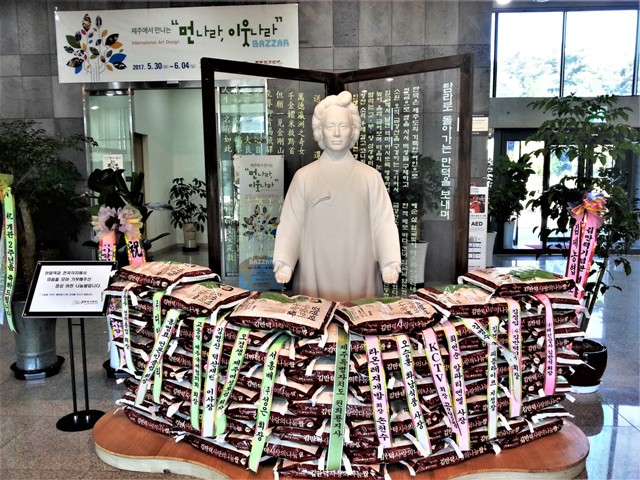 |
|
| Kim Man-deok helped Jeju residents during a famine by selling her assests to buy rice from the mainland Photo courtesy Jia Min Tan |
Kim Man-deok, known dearly as Mandeok Halmang (Granny Mandeok) to the people of Jeju, is a local hero as well as a famous historical figure.
During a great famine in the late 18th century after years of bad harvest, Kim, the great philanthropist of Jeju, sold all her assets to import rice from the mainland and save the starving people.
In commemoration of its second anniversary, the Kim Man-deok Memorial Hall is holding a special exhibition in collaboration with artist Lee Ha-yoon. The works of art in the exhibition feature rice as the central motif in honor of the spirit of Kim Man-deok.
The exhibition, titled “Rice Sentiments: Beautiful Hands”, is a tribute to Kim Man-deok’s spirit of generosity and sharing, remembering the selfless hands that gave away rice to save the lives of the starving residents. It is part of the memorial hall’s efforts to spread her story and convey the message of hope, as well as to highlight the value of rice.
| |
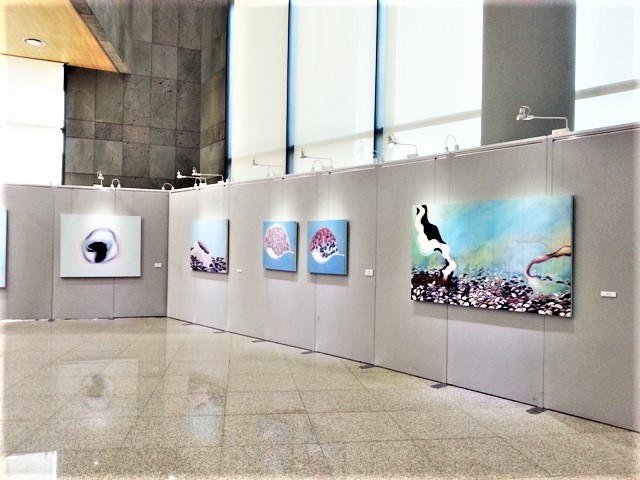 |
|
| The exhibition uses rice as its central motif Photo courtesy Jia Min Tan |
Over thirty works from Lee Ha-yoon are on display. Lee has been using rice in her paintings, sculptures, installations, and performances over the past few years.
“The Four Emotions” depicts a huge spoonful of pinkish rice mixed with blue human figures against a purplish-blue background. The four emotions, namely joy, anger, sorrow, and happiness, is basically a term that encompasses the whole human experience.
Regardless of what we go through, whether we are happy or sad, we have to eat. Rice, being the main staple food in Asian culture, is what we eat every day no matter what we are feeling. That makes rice not just a witness of our life story, but itself the story of our lives, inseparable from our everyday experiences.
An interesting and perhaps easily understandable set of paintings is the “Silver Rice”, “Golden Rice”, and “Earthen Rice” series. All men are created equal, but some are born with a silver spoon, while some are born with an earthen spoon. This probably makes the rice that is eaten with the different spoons, different. It could also be understood metaphorically that while some things are food for the soul, some are just dirt.
| |
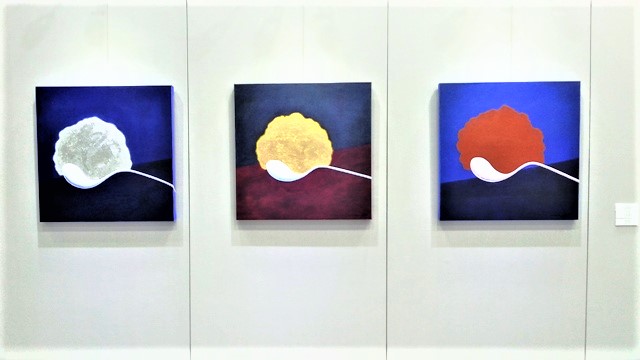 |
|
| "Silver Rice," "Golden Rice," "Earthen Rice." Photo courtesy Jia Min Tan |
Another beautiful painting featured on the first floor is “Abysm”. Structures made of rice stand atop a surface that looks like the ocean floor, which is in turn made of black, ribbon-like structures. If we were to understand Abysm as “the primal chaos before Creation”, the painting gives the idea that rice has existed since the beginning of the world, and it is where life began.
Lee’s paintings are really open to many interpretations because other than the spoonfuls of rice, most of the other paintings are very much abstract compositions of rice and other less obvious shapes.
On the second floor is a pair of colorful portrayals of “The Sound of Eating.” Drawing the connection to the title, the shapes other than the more recognizable rice grains, look like the stomach, blood vessels, glands in the body, and also perhaps, molecules of energy.
A set of dark, mysterious paintings on the other side begs for interpretation, as the title “HoyHoyHoy” (회회회) is a little hard to translate, due to the single word Hoy having a multitude of possible meanings.
| |
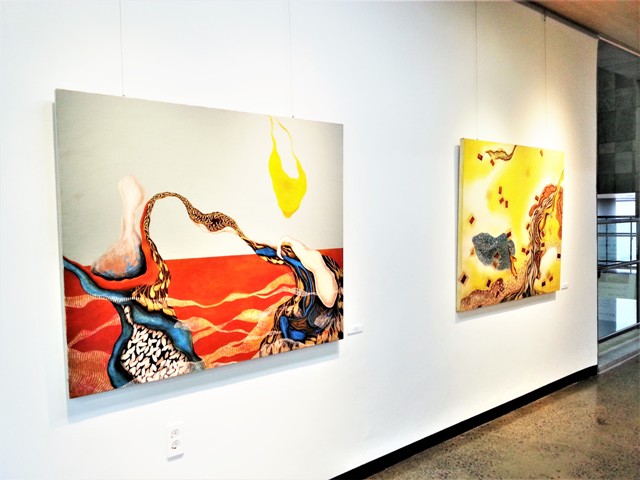 |
|
| Lee's paintings are open ot many interpretations Photo courtesy Jia Min Tan |
Numerous little human figures in various forms - sitting, kneeling, upright, or upside-down - are entangled with what looks like trees in a forest, while random red lines run across some of the humans. The forest floor is covered in rice.
Although many of the paintings are hard to understand, rice is the one recognizable element in all the works. It provides a space for thought to consider the kind of roles that rice plays in our lives, and the roles it has played in our cultures.
In the olden days, rice is the food that is given out during times of famine. When evil merchants stock up on rice to hike up the prices, poor people suffer and starve when they cannot afford this basic food. Rice is basically a symbol of life, as well as wealth. The household whose rice vat is always full is a well-to-do one.
| |
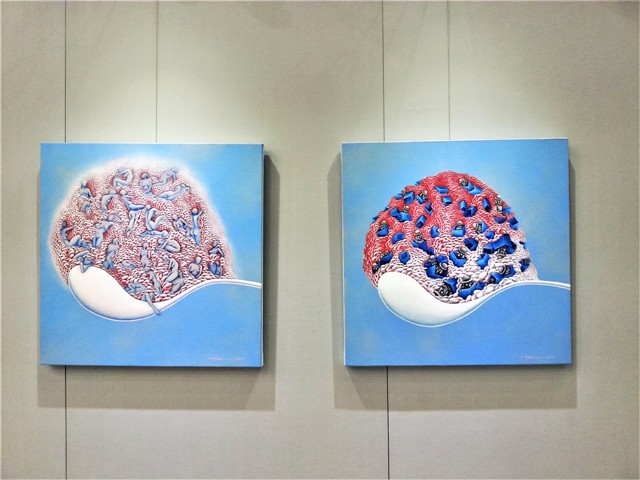 |
|
| Photo courtesy Jia Min Tan |
The act of giving out such a precious source of life is a gesture of great significance. The statue of Kim Man-deok at the entrance of the Memorial Hall, poised behind stacks of rice donated by various kind spirits, serves to remind us of something more important.
In a politically unstable time like ours, not just in Korea but also in the rest of the world, we need more kindness and compassion towards our fellow humans.
In the age of highly advanced information technology, when everyone is more and more distanced from the people who matter to us by the screens and the Internet, let us remember Kim Man-deok’s beautiful hands of generosity and her spirit of sharing and compassion. So that we may always think of one another kindly, and reach out our hands to our loved ones and to people in need.
The Kim Man-deok Memorial Hall is open Tuesdays to Sundays from 9 a.m. to 6 p.m. Admission is free of charge. “Rice Sentiments: Beautiful Hands” is open till June 28, 2017.
|
























